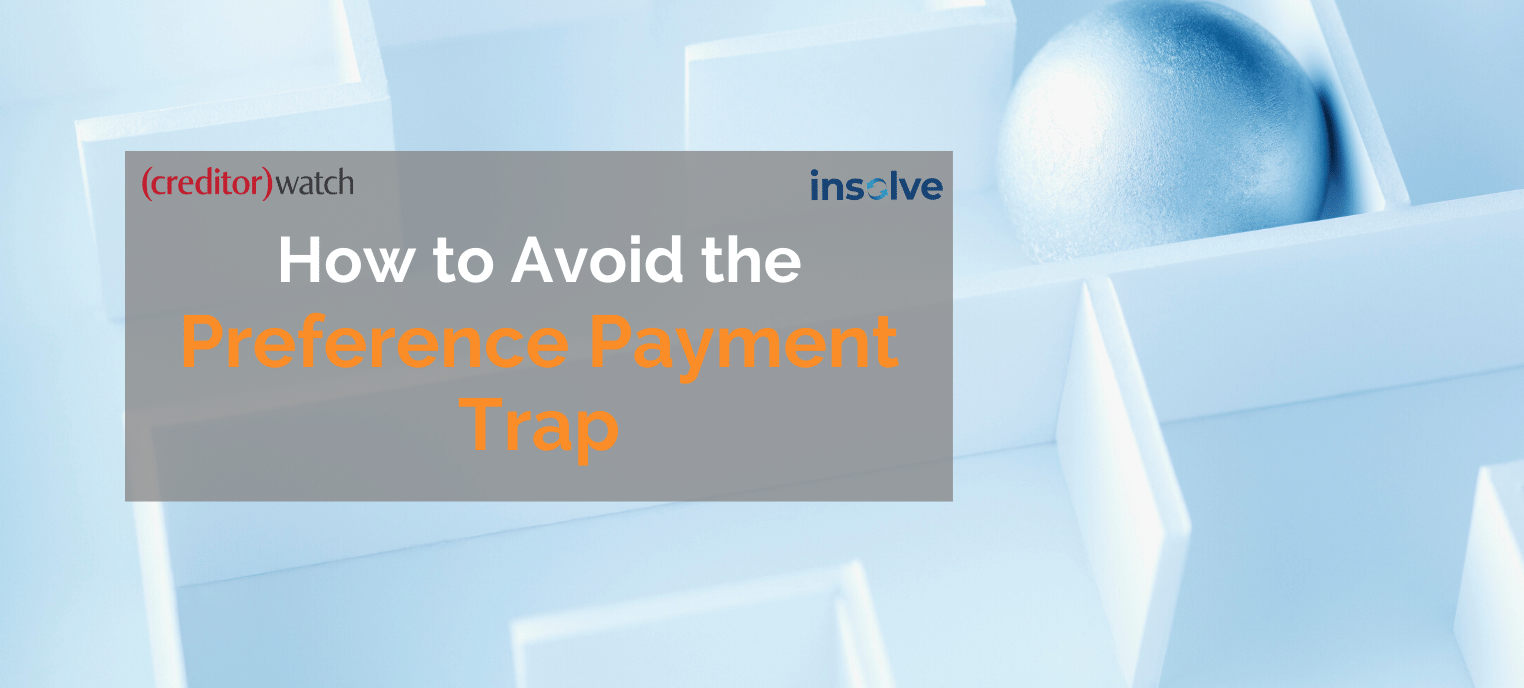A guide to preference payments and the benefits of being a secured creditor
One of the risks of the COVID-19 economic downturn are zombie companies propped up by short term stimulus. The threat posed by preference payments from these and other failed businesses is just as deadly, but you can take steps to try to protect yourself.
To find out what to watch for and the traps to avoid, Insolve asked Solicitor Bruce Pasetti of Thesolvers.com.au, and Insolve Panel members, liquidator Stephen James and liquidator/bankruptcy trustee Bill Cotter.
What are preference payments?
“A preference payment is a payment made by an insolvent company to an unsecured creditor thereby causing disadvantage to the remaining unpaid creditors. Effectively, that payment means others miss out on a ‘fair’ share,” says Stephen.
In other words, the failing zombie business pays their mates or whoever is screaming the loudest, rather than paying something to everyone equally.
Some ways a payment qualifies as a preference include:
- a reasonable person in the creditor’s shoes should have suspected insolvency
- it was made within 6 months of the company liquidating, or 4-10 years prior to the liquidation if the payment was made to a ‘related party’.
How can I avoid preference payment traps?
One trick is to become a secured creditor through having strong terms and conditions in your business supply contracts and by registering on the PPSR before giving credit or accepting payment on terms.
Bruce warns: “Secured creditors are not impacted by Preference Claims. But be aware, it’s vital to get your PPSR registration absolutely accurate and correct. You must invest time in it, or alternatively, engage a specialist. An incorrect registration is useless if defeated by the liquidator because your entire investment is very likely to be lost.”
CreditorWatch offers an award-winning product – PPSRLogic – that simplifies the way you create, manage and renew your PPSR registrations. With PPSRLogic, you access an innovative portal that automatically identifies missing or incorrect information, so you can complete registrations faster. You can also upload bulk registrations and import existing registrations.
Over 500 CreditorWatch customers use PPSRLogic: read their success stories and see how it’s transformed a business just like yours. Find out more at https://ppsrlogic.com.au/
Can I fight my way out of the trap?
“Yes you can, but like any scenario with zombie companies, you have to minimise your risk,” says Stephen.
Business owners should consider the following when chasing outstanding debts:
- Follow a standard debt collection process previously communicated to the customer
- Keep written communication to a minimum
- Enter instalment arrangements early
- Try to avoid having round figure payments from debtors. Instead have specific invoice amounts paid.
Stephen says: “If you have taken early advice, you will know whether you should stand and fight a preference claim, or fold. Dealing early is usually the best.”
Do the temporary COVID-19 business measures impact preferential payments?
For the period between 25 March-24 September 2020:
- Insolvent trading rules were relaxed
- The minimum debt amount required to issue a bankruptcy notice or liquidation proceeding (such as making a creditor’s statutory demand) was raised to $20,000
- The time allowed to respond to a bankruptcy notice or creditor’s statutory demand has been increased from 21 days to 6 months.
Bill Cotter says: “Even in these times, the liquidator still has to prove you suspected a company was insolvent when you received the challenged payment. If you chase a late payment, or accept part payments, the circumstances could be argued as being related to the general economic crisis, and short term cash flow challenges, but not necessarily a reason for you to suspect that the creditor was insolvent.”
Bill also suspects that his fellow insolvency practitioners will take an industry-by-industry view. “For example, take a tourism operator whose business has been in hibernation. If it were a zombie business that was wound up, it is unlikely it will have made too many preference payments over the six months preceding its failure.”
“If other businesses are still trading in some form and are propped up by JobKeeper and other stimulus, but then fail afterwards when the supports are removed, a liquidator may well be looking closely at where its payments have been made.”
Stay alert and don’t get caught out
In zombie movies, the traps are easy to spot. We squirm in our seats, we get outraged at our heroes for being so stupid and more than anything, we can’t believe they didn’t see the obvious.
Preference payment traps aren’t obvious, but there are ways to avoid them if you stay alert. Don’t get caught, but if you do, get specialist advice on how to respond, because there is often more than one way out of the trap.
For additional information on preferential payments, read Stephen, Bruce and Bill’s article here.



